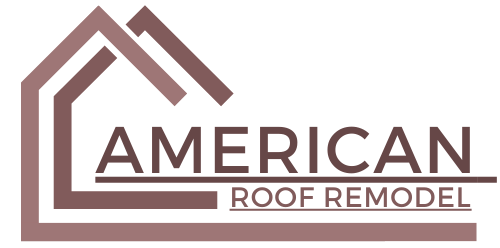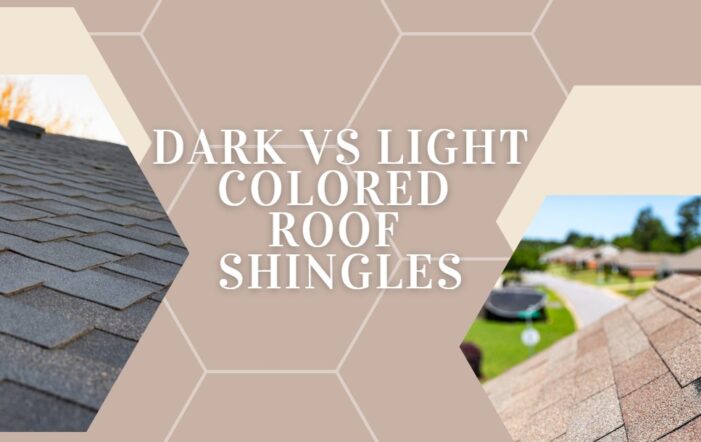Your roof is more than just a protective shield for your home. It’s a pivotal aesthetic component that contributes to your home’s overall curb appeal. One significant factor that influences your roof’s aesthetics and performance is the color of your shingles. When it comes to choosing between dark and light-colored roof shingles, it’s not a decision to be made lightly. It’s an intricate balance of style, energy efficiency, and durability. Let’s delve into the intricacies of this fascinating subject.
The Impact of Shingle Color
Believe it or not, the color of your roof shingles can affect your home’s comfort, energy efficiency, and overall aesthetic. While it might seem like a minor design choice, it’s a decision with long-term effects.
Advantages and Disadvantages of Dark-Colored Shingles
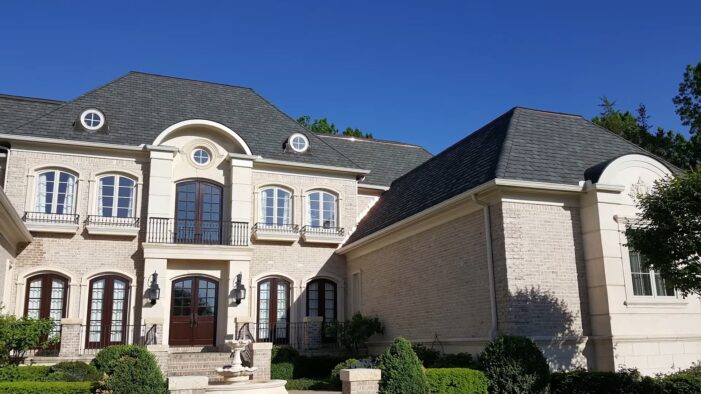
Advantages
Aesthetic Allure
Dark shingles, whether they’re black, brown, or gray, often offer a sophisticated and timeless appeal. They typically contrast well with lighter-colored homes and can provide a dramatic look.
Heat Absorption
If you live in a colder climate, dark shingles might be advantageous since they can absorb more heat and help melt snow and ice on your roof.
Disadvantages
Heat Retention
While dark shingles absorb heat effectively, they also retain it. This can raise your home’s interior temperature during the hot summer months and potentially increase cooling costs.
Advantages and Disadvantages of Light-Colored Shingles
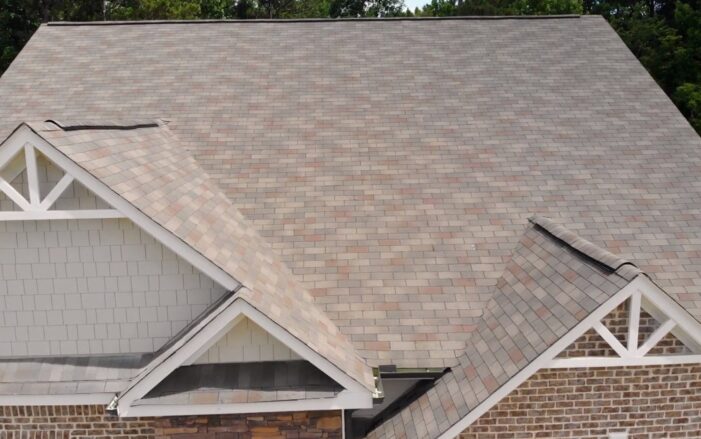
Advantages
Heat Reflectivity
Light-colored shingles can reflect sunlight rather than absorbing it. This trait makes them an excellent choice for warmer climates as they can help keep your home cooler and possibly reduce air conditioning costs.
Versatility
Light-colored shingles offer a neutral backdrop, making them highly versatile and an excellent match for a wide range of house colors.
Disadvantages
Stain Visibility
Lighter-colored shingles can show stains and discoloration more readily than darker ones. This means that they may require more frequent cleaning to maintain their appearance.
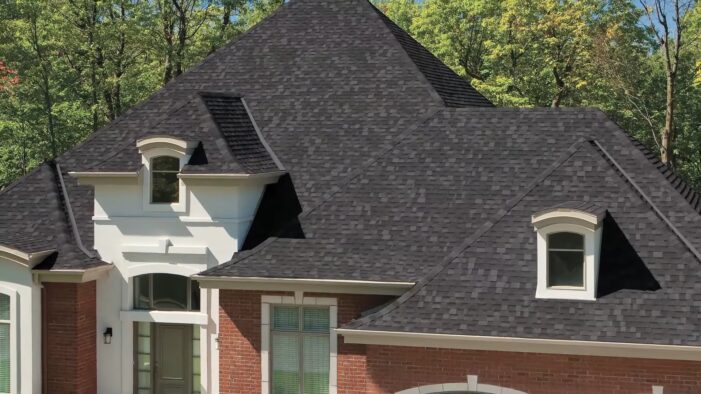
Energy Efficiency
Energy efficiency is a critical aspect to consider when choosing between light and dark roof shingles. Research shows that dark-colored roofs can get up to 10-15 degrees hotter than light-colored roofs under the full sun. This extra heat can transfer into your home, potentially leading to higher cooling costs.
In contrast, light-colored shingles can reflect the sun’s rays, helping keep your home cooler in the summer. However, they don’t offer the same heat absorption benefits during the colder months that dark shingles do.
Maintenance and Durability
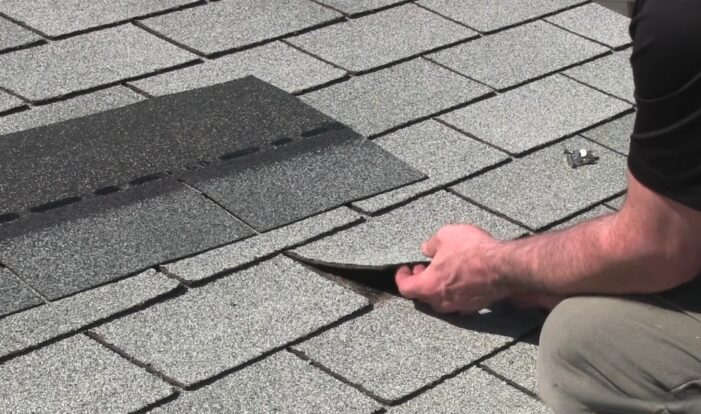
While shingle color can play a part in the durability of your roof, it’s often less significant than factors such as the quality of shingle material and installation. That said, dark shingles might show less dirt and staining over time than lighter ones, while light-colored ones can reveal streaks, moss, and algae more readily. However, these visual imperfections don’t necessarily affect the structural integrity of the shingles.
Visual Appeal
Aesthetics play a critical role when choosing the color of your roof shingles. The color should complement the style and color of your home, blend with the neighborhood, and match your personal preference.
Dark-colored shingles can create a strong, bold contrast, especially in lighter homes. They are often chosen for their timeless and elegant appeal.
Light-colored shingles, on the other hand, offer a subtle, soft appearance that can create a tranquil and serene ambiance. They are extremely versatile and work well with various house colors, making them a popular choice.
When evaluating aesthetics, consider the architectural style of your home, the color palette of your exterior, and even your landscaping. Take time to study color swatches in different lighting conditions and think about how they’ll pair with your home’s current colors.
The Role of Home Location in Shingle Color Choice
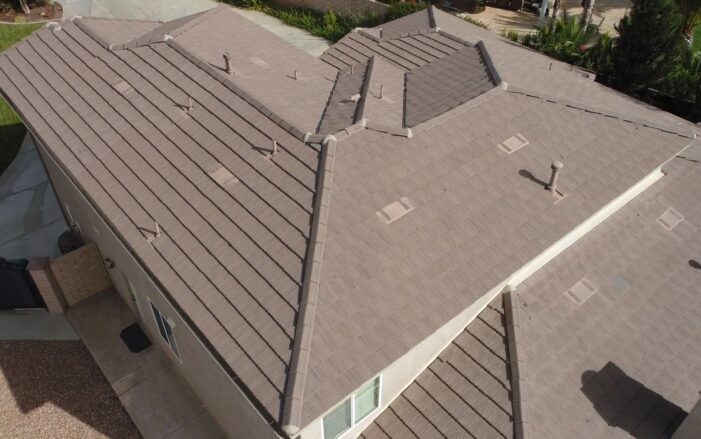
Your geographical location can significantly impact your choice between light and dark roof shingles. As previously mentioned, dark-colored shingles absorb more heat, which can be advantageous in colder climates, while light-colored ones reflect sunlight and help keep your home cooler in warmer regions. However, it’s not just about temperature; consider factors such as exposure to direct sunlight and local weather patterns. For instance, if your home is situated in an area prone to heavy rain, darker shingles might be a more suitable choice since they tend to hide stains better.
Local Building Codes and HOA Guidelines
Before making a decision on your roof shingle color, it’s essential to check any local building codes or homeowners association (HOA) guidelines that might influence your options. Some areas or communities might have specific regulations related to roof color for reasons such as historical preservation, neighborhood aesthetics, or environmental concerns.
Impact on Home Resale Value
Another point to ponder when choosing your roof shingle color is the potential impact on your home’s resale value. While this might not be the first thing homeowners consider, it’s worth noting that the aesthetic appeal of your home can significantly influence its market value. A well-chosen, attractive roof color can make your home more appealing to potential buyers. Some real estate experts suggest that neutral colors, whether light or dark, tend to be more desirable as they appeal to a broader range of buyers.
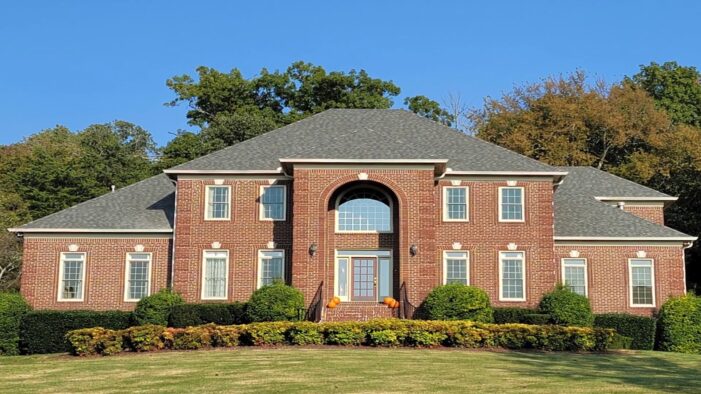
Innovative Roofing Technologies
Roofing technology has evolved significantly over the years. Innovations like cool-roof technology, often available for both light and dark-colored shingles, can help reflect more sunlight and absorb less heat, regardless of the color. This technology could be a game-changer if you prefer darker shingles but live in a warm climate, as it allows you to enjoy the aesthetic benefits of dark ones without the associated heat absorption.
Incorporating Shingle Colors into the Larger Design Scheme
Your roof shingle color should harmonize with the overall design and color scheme of your home’s exterior. Think about how the shingle color you choose will pair with elements like your siding, brickwork, stucco, or trim. For instance, red or brown shingles often look great with a brick exterior, while a gray or black roof can complement a home with a cooler-colored exterior, like blue or white.
Final Thoughts
Choosing between dark and light-colored roof shingles is a significant decision that impacts not only the look of your home but also its energy efficiency and maintenance demands. Remember that there’s no one-size-fits-all answer – it’s about understanding the benefits and drawbacks of each and how they align with your specific needs and circumstances.
Do you live in a hotter climate? If so, light-colored shingles that reflect heat might be a good choice. However, if your home is in a cooler region, darker shingles could provide beneficial heat absorption during those chillier months. Whether you opt for light or dark-colored ones, remember that this decision is one part of creating a home that reflects your style, provides comfort, and stands the test of time.
